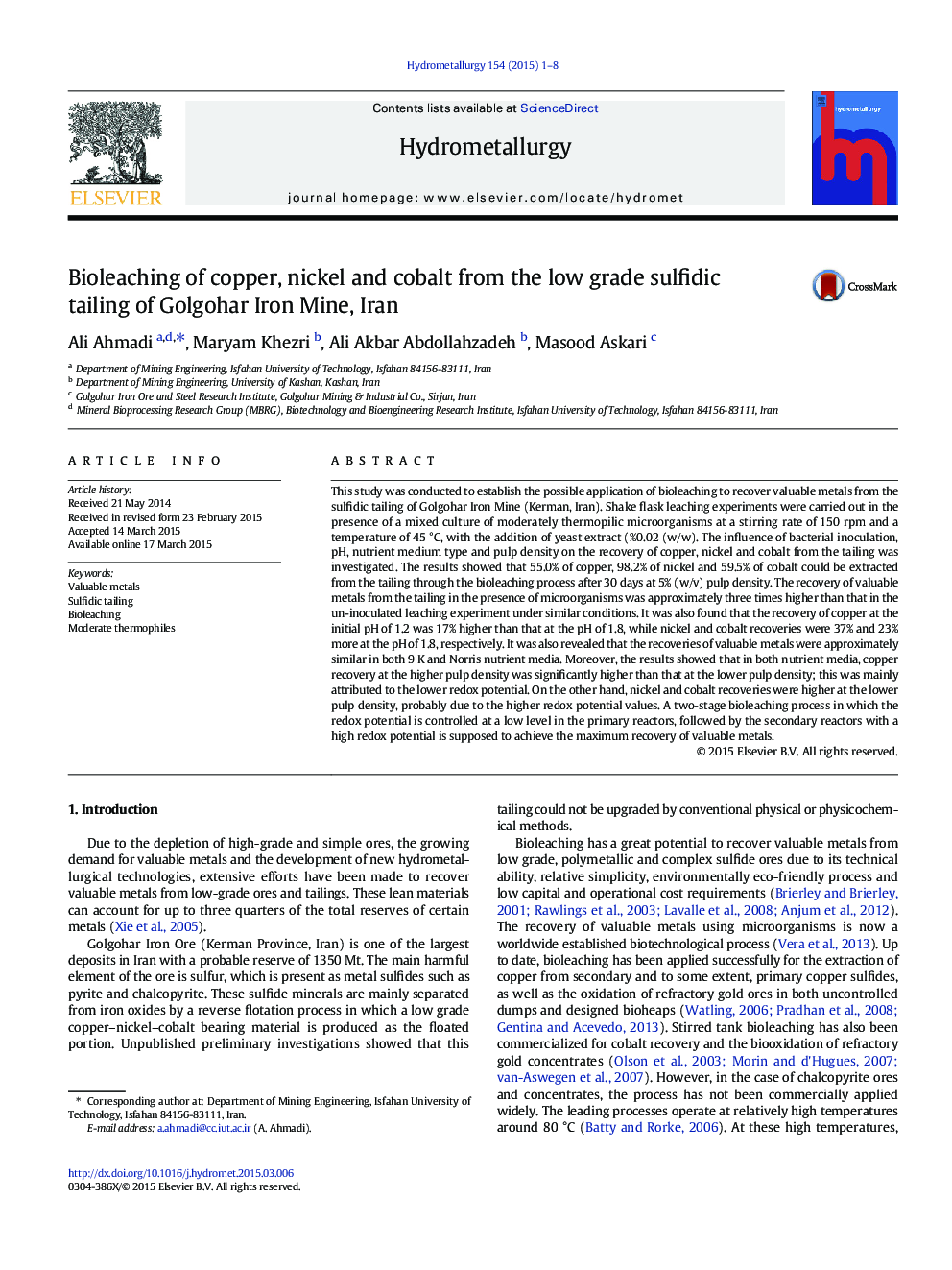| کد مقاله | کد نشریه | سال انتشار | مقاله انگلیسی | نسخه تمام متن |
|---|---|---|---|---|
| 212021 | 462030 | 2015 | 8 صفحه PDF | دانلود رایگان |
• Bioleaching of a Cu–Ni–Co bearing tailing was conducted using moderate thermophiles.
• Bioleaching resulted in recovery of 55% of Cu, 98.2% of Ni and 59.5% of Co.
• Effect of bacterial inoculation, pH, nutrient type and pulp density was investigated.
This study was conducted to establish the possible application of bioleaching to recover valuable metals from the sulfidic tailing of Golgohar Iron Mine (Kerman, Iran). Shake flask leaching experiments were carried out in the presence of a mixed culture of moderately thermopilic microorganisms at a stirring rate of 150 rpm and a temperature of 45 °C, with the addition of yeast extract (%0.02 (w/w). The influence of bacterial inoculation, pH, nutrient medium type and pulp density on the recovery of copper, nickel and cobalt from the tailing was investigated. The results showed that 55.0% of copper, 98.2% of nickel and 59.5% of cobalt could be extracted from the tailing through the bioleaching process after 30 days at 5% (w/v) pulp density. The recovery of valuable metals from the tailing in the presence of microorganisms was approximately three times higher than that in the un-inoculated leaching experiment under similar conditions. It was also found that the recovery of copper at the initial pH of 1.2 was 17% higher than that at the pH of 1.8, while nickel and cobalt recoveries were 37% and 23% more at the pH of 1.8, respectively. It was also revealed that the recoveries of valuable metals were approximately similar in both 9 K and Norris nutrient media. Moreover, the results showed that in both nutrient media, copper recovery at the higher pulp density was significantly higher than that at the lower pulp density; this was mainly attributed to the lower redox potential. On the other hand, nickel and cobalt recoveries were higher at the lower pulp density, probably due to the higher redox potential values. A two-stage bioleaching process in which the redox potential is controlled at a low level in the primary reactors, followed by the secondary reactors with a high redox potential is supposed to achieve the maximum recovery of valuable metals.
Journal: Hydrometallurgy - Volume 154, April 2015, Pages 1–8
